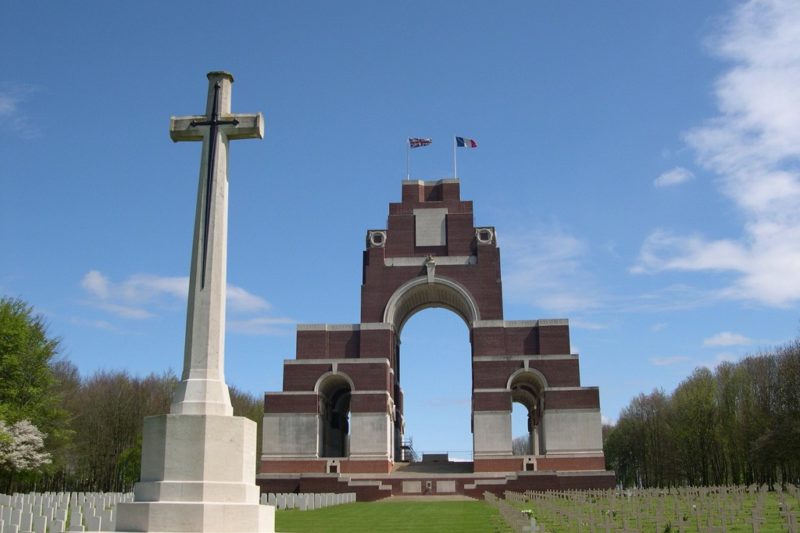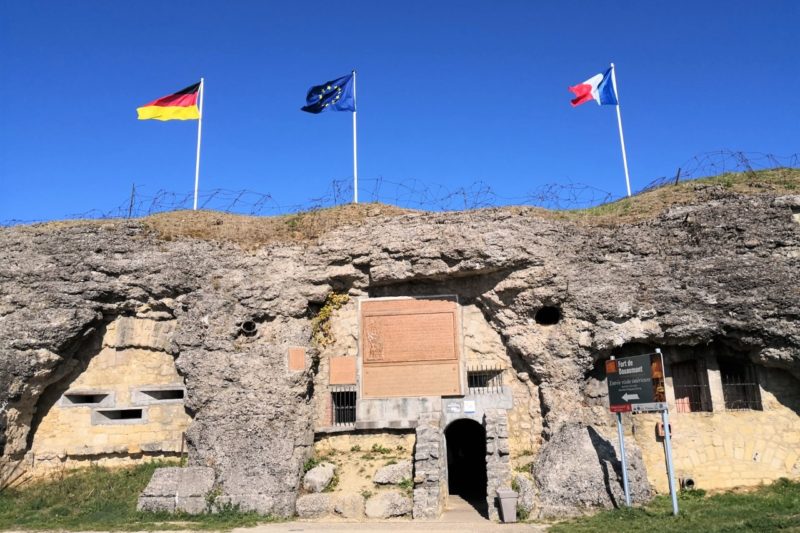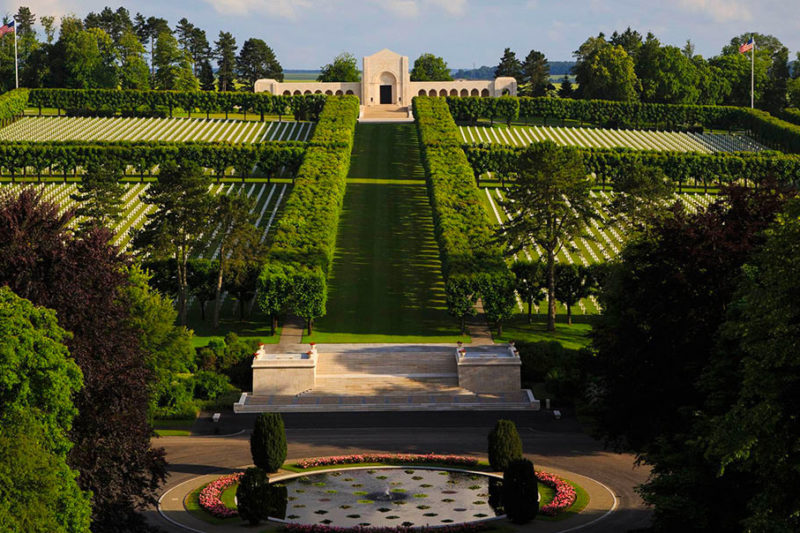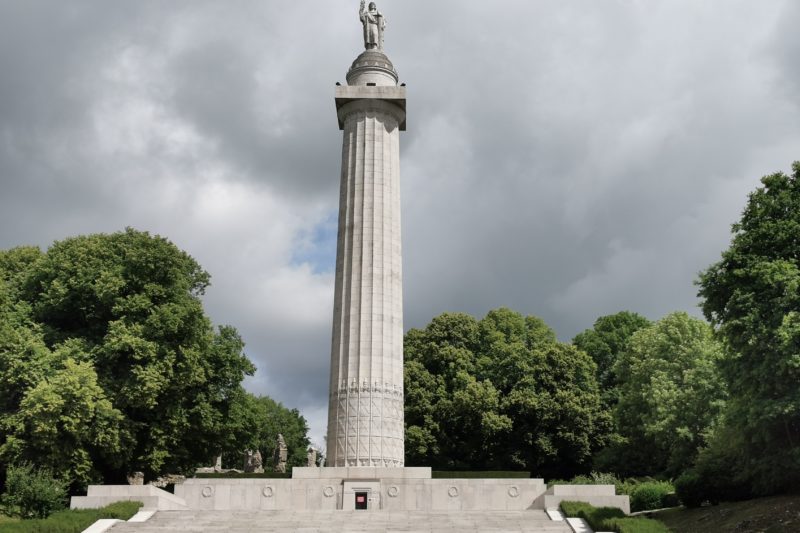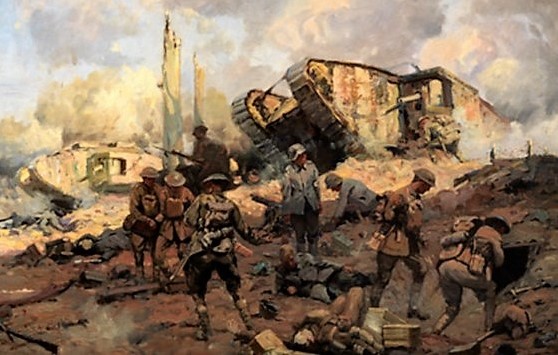Tour code : SOMME1
WW1 Australians in the Somme battlefields 1916 - 1918 Tour
Day trip from Paris in a small group aboard a Minivan (max 7 pax)
- Information
- Tour Description
- Location
- Gallery
- Similar Tours
HIGHTLIGHTS
- Day trip from Paris to the Somme in France’s Picardy region.
- Follow the footsteps of the braves australians soldiers who fought in the Somme in WW1.
- Walk along the graves and pay your respect in front of the wall of the missing australians soldiers at the Australian Memorial in Villers-Bretonneux
- Discover the “Sir John Monash Centre” in Villers-Bretonneux
- See the huge landmine « Lochnagar Crater »
- Walk along the original WW1 trenches at Beaumont Hamel Newfoundland Memorial Park
- See the Digger’ statue standing on top of the mount saint quentin ridge in Péronne
- Browse thousands of war-objects collected and displayed at the Historial of Peronne
THE PRICE INCLUDES
- Small group tour (Max 7 participants)
- Travel aboard an air-conditioning Minivan vehicle
- Guided sightseeing tour with English-speaking guide
- Visit of the John Monash Centre
- Admission to the Historial of the Great War in Péronne
THE PRICE DOES NOT INCLUDES
- Hotel pick-up and drop-off
- Food and drinks, unless specified
- Not guided inside the Museum of the Great War in Péronne
- Gratuities (optional)
- Pick up in central PARIS
- INTRODUCTION
- STOP 1 - Australian War Memorial in Villers-Bretonneux (30mn)
- STOP 2 - Sir John Monash Centre in Villers- Bretonneux (30mn)
- STOP 3 - Australian Corps Memorial - Le Hamel (30 mn)
- STOP 4 - The « Red Baron » crash site (05 MN)
- STOP 5 - « Lochnagar Crater » site in La Boisselle (10 mn)
- STOP 6 - AUSTRALIAN MEMORIAL, POZIERES WINDMILL (15 MN)
- STOP 7 - Beaumont-Hamel Newfoundland Memorial Park (01 hour)
- STOP 8 - Lunch Time in Péronne (01 hour)
- STOP 9 - MEMORIAL OF THE 2ND AUSTRALIAN DIVISION OF MOUNT ST QUENTIN, PERONNE (15 MN)
- STOP 9 - Historial of The Great War in Péronne (01 hour)
- RETURN TO PARIS
In the morning the driver guide will pick you up at 06:25 am at the following adress : UGC CINEMA NORMANDY 116 Av. des Champs-Élysées, 75008 Paris
(Easy to access by metro Line 1 and to get off at Metro station « George V »)
The tragedy of the Somme in 1916, even nowadays is remembered by all commonwealth countries as the bloodiest battle ever. At the end of the fisrt day (1st July 1916) of the attack, casualties went up to 56,000 and among them at least 19,000 commonwealth countries'soldiers got killed. By the end of the offensive in November 1916, more than 1 million soldiers would have been wounded, captured or killed.
Come and join us for a day of remembrance and discover this large and very flat areas of farming lands. War cemeteries are standing everywhere in the fields and forever will testimony of the violence and bloody battles of the Great War.
To start your trip, you will be pickup by the driver guide in central Paris near « Place de la Concorde » at 06H40 in the morning aboard a comfortable minivan. Leaving Paris, we are now heading north towards the county of Somme wich is Located at only 1h40mn drive away from the french capital.
This tour wil also give you the opportunity to see both the front line of the battle of the Somme 1916 (July to November) and also the front line of the battle of the Somme 1918 (March to September).
Your full-day history’ tour will begin in the areas of the Somme 1918 battlegrounds. First stop to visit the «Australian War Memorial » at Villers- Bretonneux who stands on top of a ridge overlooking the town.
The Australian National Memorial, Villers-Bretonneux is the main memorial to Australian military personnel killed on the Western Front during World War I. It is located on the Route Villiers-Bretonneux (D 23), in the Somme département, France. The memorial lists 10,773 names of soldiers of the Australian Imperial Force with no known grave who were killed between 1916, when Australian forces arrived in France and Belgium, and the end of the war. The location was chosen to commemorate the role played by Australian soldiers in the Second Battle of Villers-Bretonneux (24–27 April 1918).
Designed by Sir Edwin Lutyens, the memorial consists of a tower within the Villers-Bretonneux Military Cemetery, which also includes a Cross of Sacrifice. The tower is surrounded by walls and panels on which the names of the missing dead are listed. The main inscription is in both French and English, on either side of the entrance to the tower. The memorial and cemetery are maintained by the Commonwealth War Graves Commission.
In addition you will have time to discover the new visitor centre "Sir John Monash", unveiled on the 25th of April 2018 to commemorate the centenary of the Battle of Villers Bretonneux and the recapture of the town by 2 australians brigades.
The Sir John Monash Centre tells Australia’s story of the Western Front in the words of those who served.Adjacent to the Australian National Memorial in Villers-Bretonneux, the Sir John Monash Centre is the hub of the Australian Remembrance Trail along the Western Front.
This cutting-edge multimedia centre reveals the Australian Western Front experience through a series of interactive media installations and immersive experiences.
A cinema offers you a 20 minute modern film which broadcasts impressive sounds system and 3D special effects that will plunge you directly into the heart of fierces fightings alongside the Australian soldiers during the battles of the Somme between 1916 and 1918.
The Australian Memorial Corps of the Hamel was built at the initiative of the Australian government. It is dedicated to the memory of Australian soldiers who served in the Australian Corps in France during the Great War. Created in 1917, this corps was composed of five divisions that had served in France and Belgium since 1916.
On July 4, 1918, with the support of American troops, General John Monash launched a large-scale victorious attack combining infantry, artillery, aviation, armoured and parachute for the first time, thus foreshadowing the tactics of modern warfare.
The Memorial Park is located on the plateau east of the village, on the site of the final goal of the Battle of the Hamel. It was inaugurated on July 4, 1998, eighty years after the Battle of the Hamel. It commemorates the sacrifice of more than a thousand Australian soldiers during the First World War.
On 21 April 1918, exactly a month after von Hindenburg and von Ludendorff launched their last offensive, the Kaiser's Battle, the Canadian pilot, Captain Roy Brown, claimed to have shot the Red Baron down, in a field, near Vaux sur Somme.
Von Richthofen was involved in an active dogfight with British RE 8s and Camels led by Captain Arthur Roy Brown. During the last stage of this pursuit, Von Richthofen was hit by a single bullet that caused massive damage to his heart and lungs, resulting in rapid death.
In the last seconds of his life, he managed to make a hasty but controlled landing in a field, just north of the village of Vaux sur Somme, in a sector controlled by the Australian Imperial Force (AIF). His Fokker was not damaged by the landing, but Australian souvenir hunters stripped most of it.
Leaving the « Red Baron » crash site, then the ride will takes you 20km north more far away to discover the most importants sites of the battle of the somme in 1916.
Impressives sites such as the huge mine crater in « La Boisselle » detonated by the british tunneling companies in July 01th 1916.
The Lochnagar Crater was created by a large mine placed beneath the German front lines on the first day of the Battle of the Somme, it was one of 19 mines that were placed beneath the German lines from the British section of the Somme front, to assist the infantry advance at the start of the battle.
The British named the mine after ‘Lochnagar Street’, a British trench where the Tunnelling Companies of the Royal Engineers dug a shaft down about 90 feet deep into the chalk; then excavated some 300 yards towards the German lines to place 60,000 lbs (27 tons) of ammonal explosive in two large adjacent underground chambers 60 feet apart. Its aim was to destroy a formidable strongpoint called « Schwaben Höhe » in the German front line, south of the village of La Boisselle in the Somme département.
The memorial is on the site of a windmill on the northern edge of Pozières village.
From 27th September 1914 the German Army arrived in Bapaume and fought the French Army down the main road towards Albert during the next few days. Blocking the way to Albert, the French managed to hold off the advance of the 26th and 28th Reserve Divisions in this area. The German Army stopped its further advance a few kilometres south of Pozières on the main road at the village of La Boisselle. With the high ground at Pozières securely behind its forward line the German Army here had magnificent views of the countryside for 360 degrees.
During 1915 and into early 1916 the German divisions in this sector of the Somme battlefield constructed a fortified Front Line between the villages of Gommecourt, Beaumont-Hamel, Thiepval, La Boisselle, Fricourt, and Mametz to Curlu on the Somme river. An Intermediate Position consisting of barbed wire defences and strongpoints was constructed behind the Front Line, and behind that a Second Position was built up. This Second Position comprised a series of strongpoints and observation points on good sites of high ground.
The windmill on this high ground was used from September 1914 as a German field artillery observation post and command post. The views were magnificent to the front and rear of this position. The site was built up as a strongpoint just to the north of the fortified village of Pozières.
Following, the guide is now taking you to visit the Newfoundland Memorial Park in Beaumont Hamel. Over there, quite a large portion of the battleground has been preserved and so while walking through the network of the now-serene originals trenches you will see the scars of the battle which still remain on the ground.
The Beaumont-Hamel Newfoundland Memorial is a memorial site in France dedicated to the commemoration of Dominion of Newfoundland forces members who were killed during World War I. The 74-acre preserved battlefield park encompasses the grounds over which the Newfoundland Regiment made their unsuccessful attack on 1 July 1916 during the first day of the Battle of the Somme.
On 1 July 1916 at 8:45 a.m. the Newfoundland Regiment and 1st Battalion of the Essex Regiment received orders to move forward. Of the 780 men who went forward only about 110 survived unscathed, of whom only 68 were available for roll call the following day.
In the afternoon, you will discover the town of Peronne where we will take a break for lunch in a local restaurant or you will just decides by yourself of your own choices of meals (own expense).
Mont Saint-Quentin Australian war memorial, located in Mont Saint-Quentin region of Picardy, is an Australian First World War memorial.
The Australian Second Division has a war memorial on the road from Bapaume to Péronne. It is the only one of the five Australian division memorials initiated by members of the division. The base was erected in 1925. It has bronze bas-reliefs by May Butler-George of men hauling and pushing a gun and of men advancing with bayoneted rifles and hand-grenades. It had on its top an Australian soldier thrusting his bayonet through a German eagle. The sculptor was Charles Web Gilbert.
However, in 1940, German soldiers smashed the memorial. A replacement statue by Stanley Hammond of a thoughtful Australian soldier looking down was erected in 1971
After lunch and to end that very moving day, you will get a free access to explore the «Great War Historial and museum" in Péronne. A 13th century medieval castle house the WW1 museum which display a a large exhibits of uniforms and weapons all worn, designed and used by the soldiers during the conflict.
The historial of peronne museum also offers a permanent collection of Trench Artists such as « Otto Dix » who did testimony of the atrocities of the war with sketching some very graphic etchings.
Museum Layout
The Historial, Museum of the Great War in Péronne opened in 1992. A highly respected museum devoted to the history of the First World War, the Historial studies the full cultural, social and military scale of this important chapter of history.
The central part of each gallery pays testimony to life at the front, that which concerned every population at war the most.
Soldiers of various nationalities are represented by mannequins dressed in their uniforms with their weapons and personal effects by their sides. These bodies, lying in white marble pits cut out of the museum’s floor, symbolise the entire territory of the Somme riddled by trenches, and the common suffering of the men at war.
Weapons and military equipment are displayed in the centre of the galleries; placed on the ground, in pits, they pay testimony to the common suffering of the soldiers. The lives of the civilians, each and everyone ‘mobilised’ by war, are studied in the wall cabinets, divided into three sections and respectively dedicated to Germany, France and Great Britain.
During the return drive to Paris you will have time to relax aboard the minivan before to be dropped off in Central Paris (Drop off in front of the "LIDO DE PARIS 116 Av. des Champs-Élysées, 75008 Paris" in the evening between 06:30 pm till 07:30 pm).
Easy there to catch a taxi cab either to find metro station (Ligne 1 Métro : George V).

